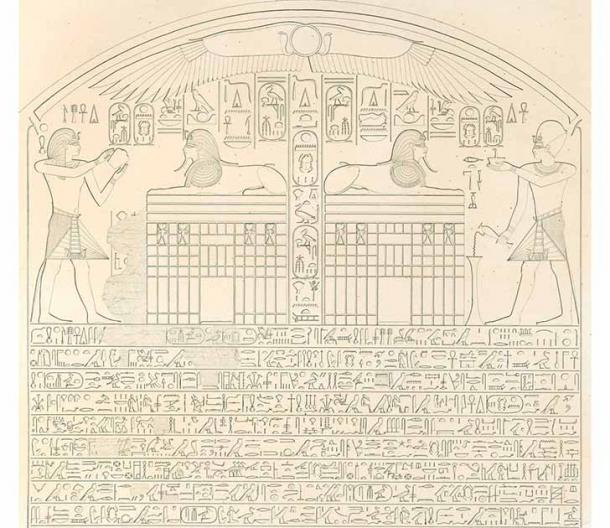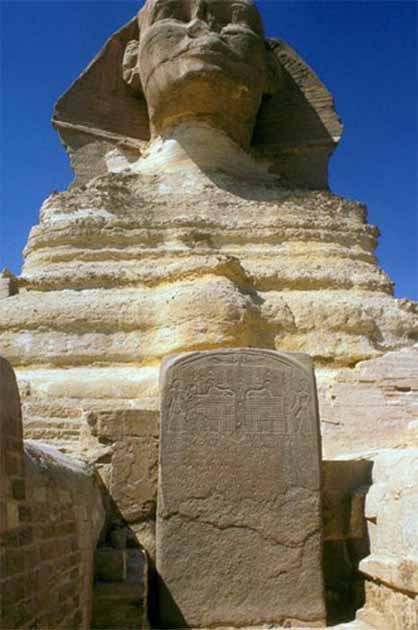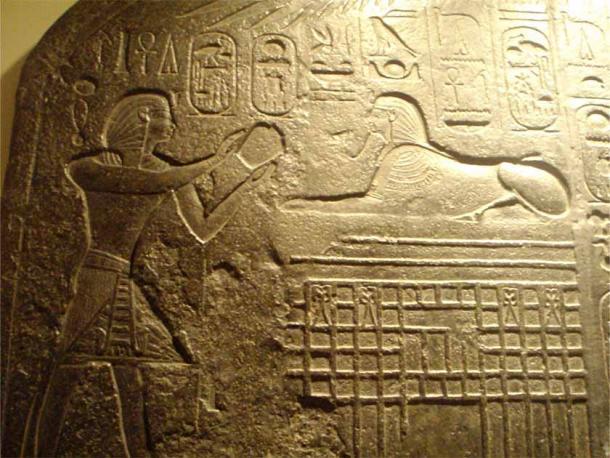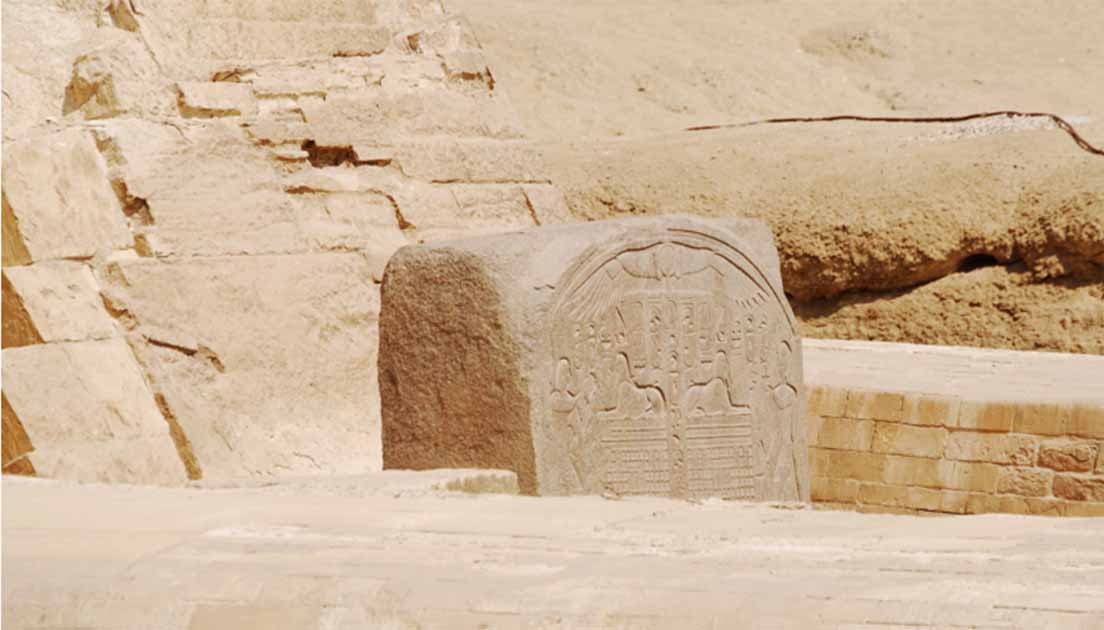The Dream Stele: How a Dream Changed the Course of Egyptian History
In or around the year 1400 BC, Menkheperure, an Egyptian prince, took a ride out to the pyramids of Giza. Upon reaching his destination, he did some hunting before eventually falling asleep under the shade of the Great Sphinx. We know this because the exact details of this day were written out in stone on what is known as the Dream Stele or the Sphinx Stela. The Dream Stele is an incredibly important artifact because it tells the story of a dream that would alter the course of Egyptian history.
The Origin of the Dream Stele
The story goes that Menkheperure fell asleep in the shadow of the Great Sphinx of Giza. The young man had a dream that the Sphinx, in the form of the god Harmachis-Re-Atum, promised him he would become king if he removed the sand that covered his body. And not just any king either. He would unite upper and lower Egypt to become king of all Egypt. “The sand of the desert, now It covers me completely. I have been waiting for you to do what is in my heart, because I know very well that you are my son and protector.”
- Ancient Egyptian Weapons: The Evolution of Warfare
- The Ten Essential Ancient Egyptian Cities: Relics of Egypt’s Storied Past

The Giza Dream Stele, which stands between the front paws of the Sphinx, as recorded by Karl Richard Lepsius, a pioneering Prussian Egyptologist, linguist, and modern archaeologist. (Karl Richard Lepsius / Public domain)
Menkheperure agreed to remove the sand and did so promptly. In return, the Sphinx kept its promise and Menkheperure went on to become king of both upper and lower Egypt, taking the name Pharaoh Thutmose IV.
Thutmose IV wasn’t chosen by his father Amenhotep II as his successor, but the Sphinx’s promise had dealt with that. When the time for a new king came, some inconvenient elder brothers, who stood in the way of the Sphinx’s chosen one, and the crown vanished without trace. Fragments from smashed inscriptions of these brothers were found around the Sphinx.
Upon becoming king, Thutmose got straight to work on a number of things that conveniently helped his image. Firstly, he changed the palace genealogies so that his mother, who was a minor concubine named Tiaa, became the “Great Royal Wife” of the kingdom. In thanks to the Sphinx, Thutmose had the sand further cleared from around the Sphinx and in doing so discovered that the lower parts were falling apart. He had the Sphinx repaired when this was discovered. Finally, he commissioned the construction of the Dream Stele in commemoration of the dream that changed his life.

Thutmose IV’s Dream Stele stands between the front legs of the Sphinx in Giza, Egypt and the dream on the stele foretold of great fortune for the one who dreamed it. (Lucas / CC BY-NC-SA 2.0)
The Dream Stele Construction and Dream Details
The stele narrates the events of Thutmose’s dream and underlines the dedication of the king to his people. It is inscribed on a large slab of pink granite from Aswan that measures 360 cm x 218 cm (11 feet 9 inches x 7 feet 2 inches). On top of it, there are representations of King Thutmose offering libations to the Great Sphinx.
The stele is actually a reused stone door lintel (the horizontal stone fitted across the top of door openings) taken from the tomb of King Khafre, who is commonly believed to have commissioned the construction of the Sphinx. Thutmose had the stele placed between the legs of the Great Sphinx for everyone to see the exact place where he dreamt he would become Pharoah. The stele itself indicated that it was placed there during the first year of Thutmose’s reign, approximately 1419 BC.
The text on the Dream Stele doesn’t just tell the story of Thutmose’s dream either. Many have indicated that it likely has political motivations behind it. The stele seems to serve as propaganda for the new king.
Firstly, the stele doesn’t shy away from the fact that the Sphinx appeared to Thutmose in the form of the god Harmachis-Re-Atum. This is a not-so-subtle indication that Thutmose was made king thanks to the blessing of a god. This link with the divine would have legitimized his position as king. “Look at me, see me, my son Thutmosis. I am your father, Horemakhet–Khepri–Atum, and I shall give you the kingship on earth, in front of all the living ones. You shall wear the White and the Red Crowns upon the throne of Geb, the hereditary prince.”

Close-up of a scene from the Dream Stele depicting Thutmose IV giving offerings to the Great Sphinx of Giza. From a full-sized reproduction on display at the Rosicrucian Egyptian Museum, San Jose, California. (Captmondo / CC BY-SA 3.0)
Theories About Whether Any Of This Happened
Many have speculated about both the authenticity of Thutmose’s story and the Dream Stele. Some have suggested that Thutmose made the entire thing up after he had his brothers murdered and usurped the crown. The stele and its accompanying story served only to justify his actions.
Others have suggested that Thutmose’s dream did in fact happen but was actually a vision caused by hereditary epilepsy. The reason for this theory is that Thutmose was not the only one in his hereditary line that reported strong religious visions and also died unexpectedly early. His son Amenhotep III, his grandson Akhenaten, as well as Smenkhkare and Tutankhamun also suffered the same fate. Some have speculated that they suffered from the same familial temporal epilepsy syndrome.
- The Lost City of Thinis, First Capital of a United Egypt
- Egyptian Hippos: Ancient Symbol of Protection, Rebirth And Hunting
Some experts believe that the Dream Stele doesn’t even date to the reign of Thutmose IV despite what its inscriptions may claim. There are errors and irregularities in orthography that are inconsistent with this date and type of monument. It is possible that this is because the inscriptions found on the monument today are attempted restorations of the damaged original that can, in fact, be dated to Thutmose IV. It may also have simply been added to the Sphinx at a much later date in an attempt to increase its importance. Regardless of its origin, the Dream Stele is an important part of Egyptian history.
Top image: Thutmose IV’s Dream Stele standing between the front legs of the Sphinx in Giza, Egypt. Source: Claudio Caridi / Adobe Stock
By Mark Brophy
References
Combing, B. 2017. Sphinx Dream. Available at: https://www.strangehistory.net/2017/11/05/sphinx-dream/
Hill, J. 2010. Dream Stele (Sphinx Stela). Available at: https://ancientegyptonline.co.uk/dream-stele/
Historical Eve. 2021. Dream Stele. What did the Sphinx promise Thutmose in his dream? Available at: https://historicaleve.com/dream-stele-sphinx-promise-thutmose-in-dream/
Kinnaer, J. 2014. Dream Stela- Introduction. Available at: http://www.ancient-egypt.org/language/anthology/fiction/dream-stela/dream-stela---introduction.html#previous-photo



















Comments
Wikipedia: "The stele itself is a reused door lintel from the entry to the mortuary temple of Khafre as pivot sockets on the back of the stele match those at the threshold of the temple."
What, had stone masonry, let alone quarrying, become a lost art by then? Very dubious.
Nobody gets paid to tell the truth.